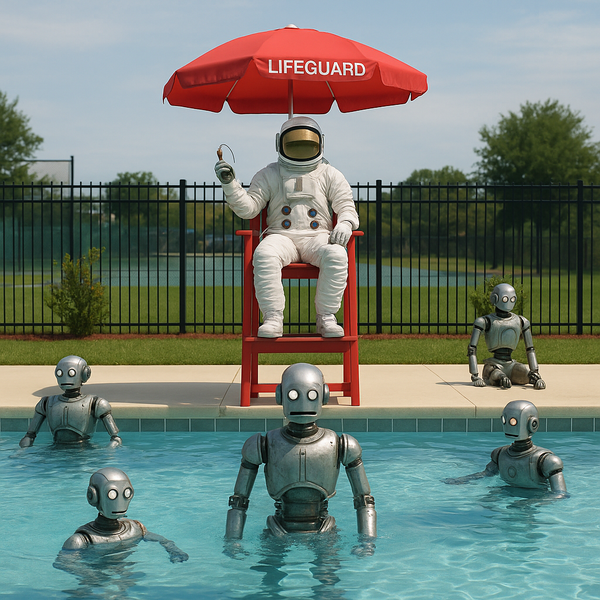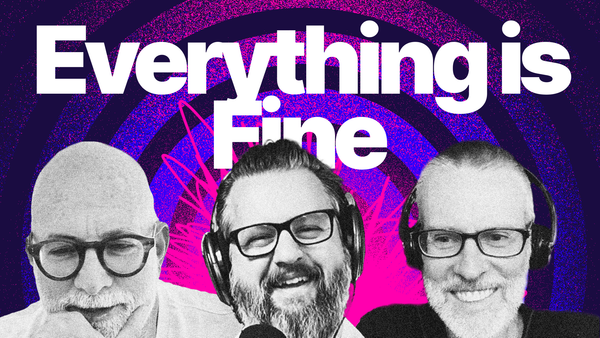Media is media
Blurring lines

Greetings from Camogli, an Italian fishing village on the Liguorian coast. I’m taking the roundabout way to Cannes. Any local tips – Cinque Terre doesn’t count – are appreciated.
Speaking of Cannes, a final reminder to sign up to get text updates throughout the week. I’m bracing for a juxtaposition of people downstream from tech wringing their hands about AI eradicating, or at least severely compressing, much of the media ecosystem while on the French Riviera. At least there’s Diplo at the Yahoo beach. Sign up.
Also, come to a live recording of The Rebooting Show at Hearst House on Monday, June 16, at 10:00am. I’ll be talking with Cosmo editor-in-chief Willa Bennett and Hearst global CRO Lisa Ryan about the reinvention of Cosmo. We will have mimosas. Register.
On Thursday, June 19, I’ll be doing a live recording of People vs Algorithms at the Dotdash Meredith villa. Dotdash Meredith CEO Neil Vogel and Axios media correspondent Sara Fischer (and probably a surprise guest we’ll enlist during the week) will join me and Troy for what will be a wide-ranging discussion that will inevitably arrive back on the end of the pageview economy. I’m most interested in what replaces it. More on that below. Sign up.
Media is media
Earlier in my career, I covered what were then known as web shops. The advent of the commercial internet led to the creation of agency businesses to build websites and fledgling internet businesses for companies. These were glorious days when a company would pay $500,000 for a microsite a few thousand people would ever visit. The problem with rackets is they rarely last, even more so in media.
As the internet grew more important, this new crop of agencies also grew in ambition. The question at the time was who would win: the rechristened interactive agencies or the mainline ad agencies. The digital people were more nimble and attuned to consumer behavior, while the traditional agencies had the big name creatives, global distribution networks and deep client relationships. Of course, they both needed to race to add the other’s strengths. And inevitably, it all became one business for the most part.
Something similar is happening with the current false divide between independent or alternative media and institutional media. Independent media has stronger audience connections, better business models, far leaner cost bases. Institutional media has institutional credibility, distribution advertiser relationships and the infrastructure needed to go beyond a solo creator business. Inevitably, these camps that are often set against each other will become entwined and mostly indistinguishable from each other.
This was a main topic of a crossover podcast project I did with Semafor’s Ben Smith Vox Media and Business Insider’s Peter Kafka. We recorded a three-segment podcast that is distributed across The Rebooting Show, Semafor’s Mixed Signals and Vox’s Channels with Peter Kafka. If you don’t already, you should listen to both of the shows.
For my segment, I wanted to get into how these camps are blurring. Much of the vocabulary is outdated. WPP Media scrambled a clarification to its ad spending report that provide a too-good-to-check stat: The amount of ad dollars going to “user-generated content” would surpass professionally produced content. Obviously, classifying everything on YouTube “user-generated content” is from a time capsule. The days of institutional media pretending to have a monopoly on “premium” have ended.
“Creator” is a catchall term that came into use to separate YouTube performers from Instagram selfie people, aka influencers. Outside of the YouTube world, creator is an awkward label for a journalist who sets up shop on Substack. While I’m sure Subtack likes the use of Substacker, I don’t think that fits either. I’m not sure if gatekeeping is cool again, but I do know that even newsletter boosters now warn that confining an independent media business to a newsletter is usually a mistake. You just have to do lots of things.
Even independent media is awkward. Just look at the strange jumble of people and organizations to occupy the White House press briefing’s new media chair. Similarly, I took note of a micro-kerfuffle after Apple invited Substackers independent media Emily Sunberg and Rachel Karten, as well as creator Oren John, to WWDC. Puck labeled them “influentials,” and took a shot at them being too old to reach Gen Z, which maybe but that’s a wild guess. It’s more likely that Apple and most companies will take a more ecumenical approach to media because it’s so fragmented. As for Oren, he’s an Orange County dad. I don’t think he’s part of a Gen Z strategy.
Media is media. Institutional media will continue to market how their brands confer trust. Sometimes. The market ultimately determines that. And surveys I see do not back up that institutional media has much of a moat there, particularly in news. Independent media will professionalize on a presentation layer. And the reality is when word of Elon Musk and Donald Trump going to war broke, FBI director Kash Patel was speaking to Joe Rogan and JD Vance was with Theo Vonn.
Check out the conversation on The Rebooting Show. Mixed Signals and Channels.
Thanks for reading. I’ll be writing from Cannes next week.


